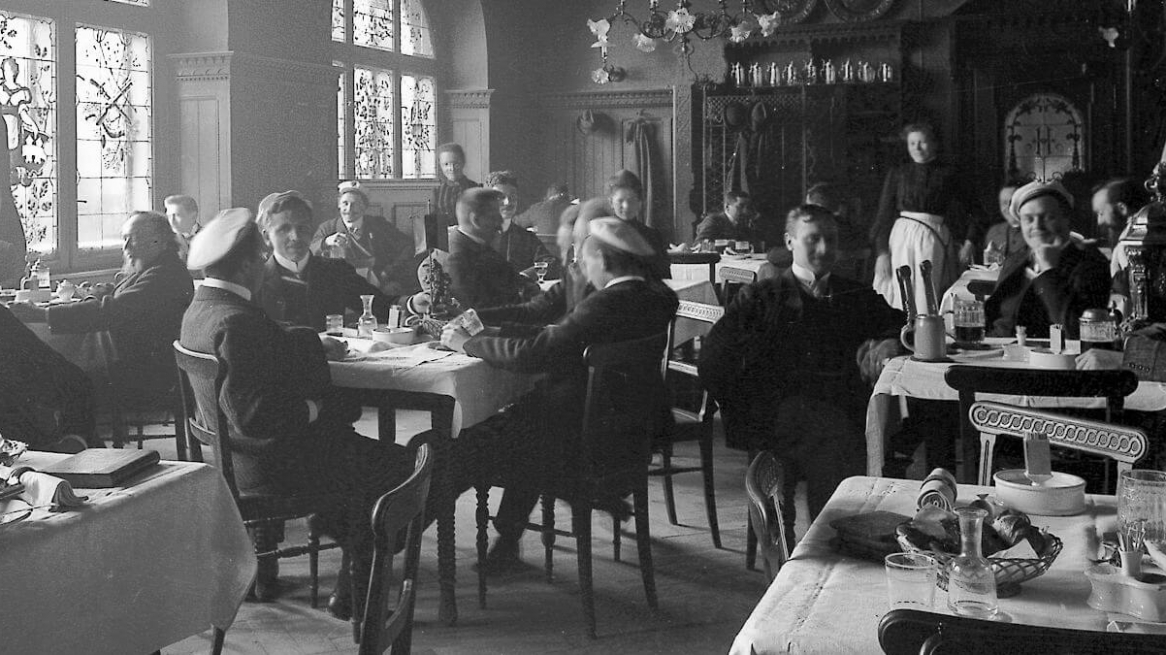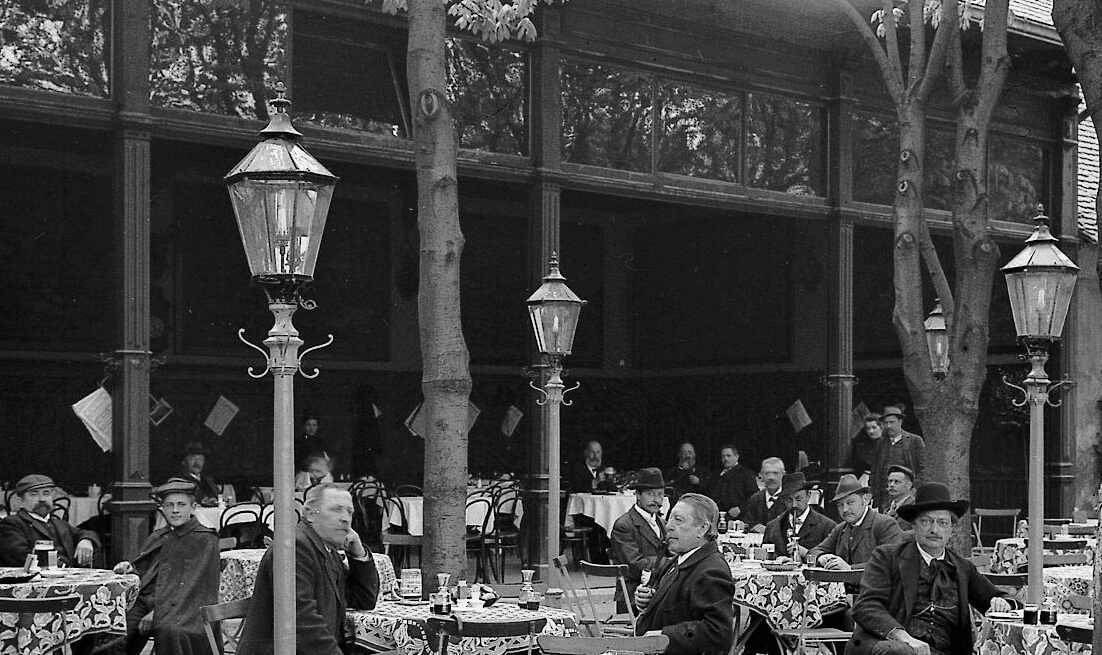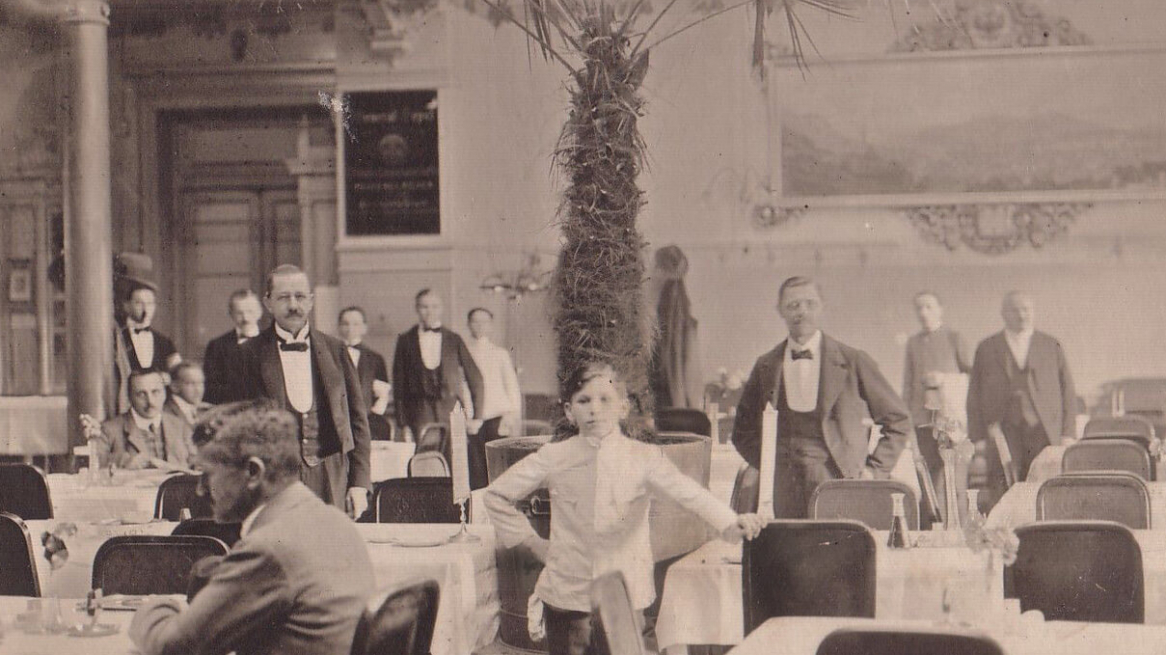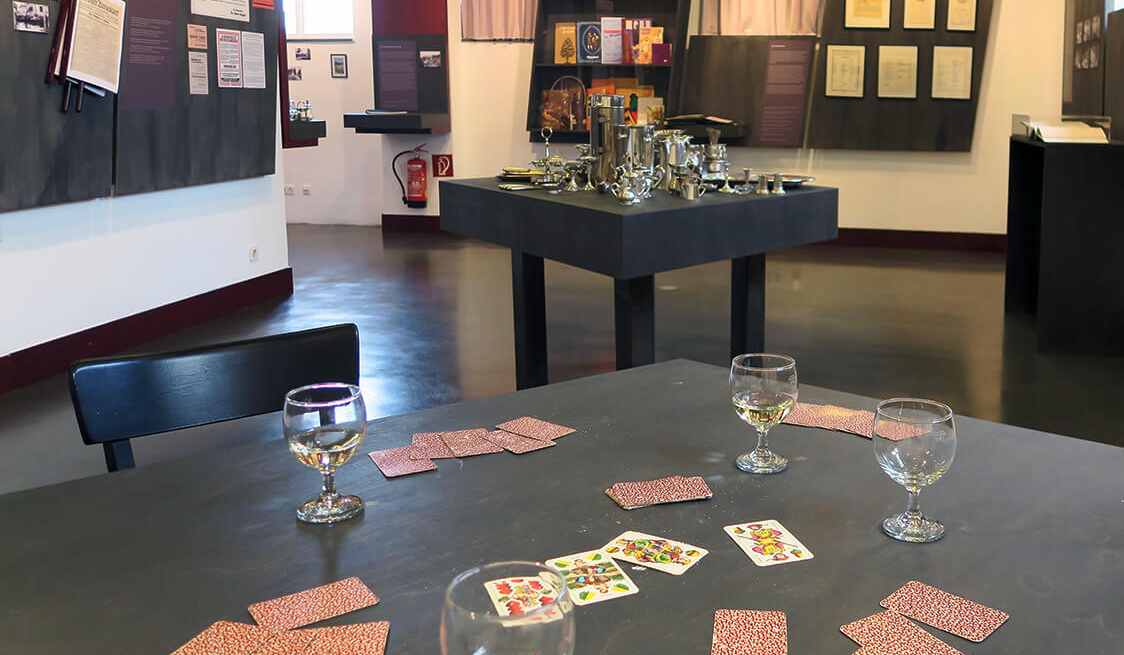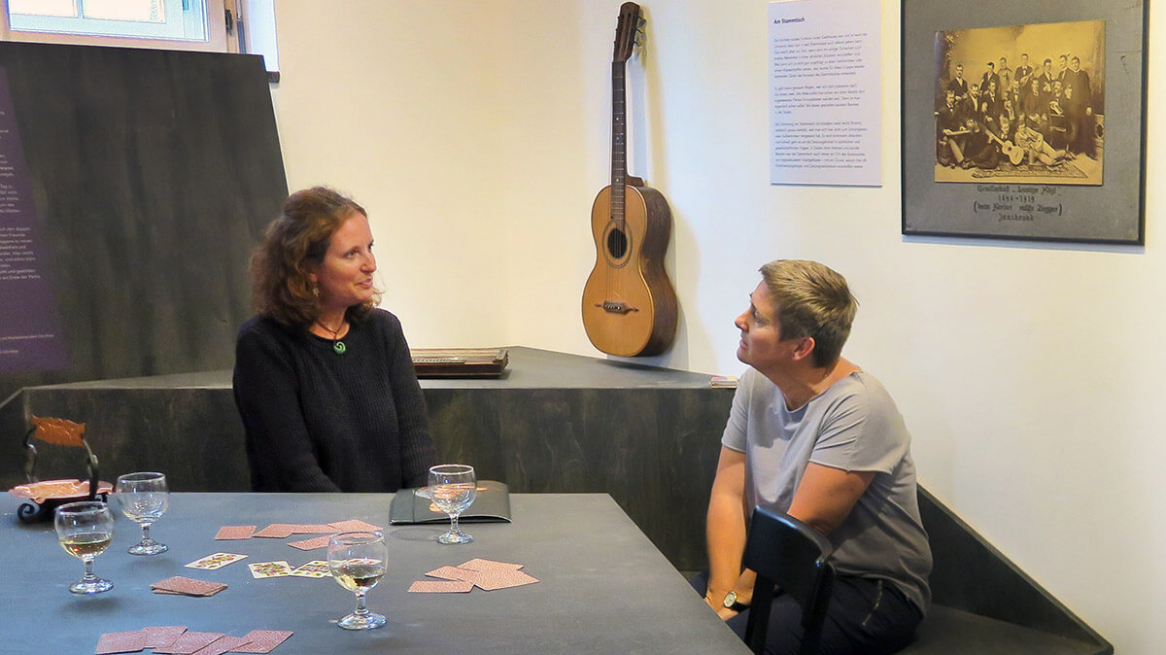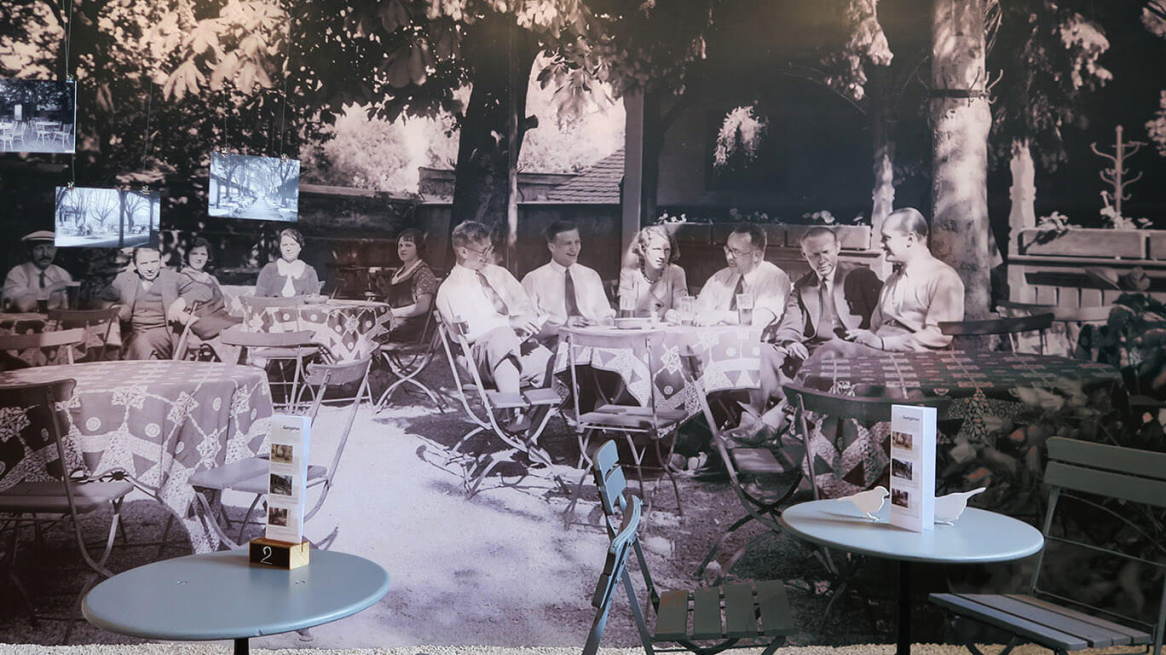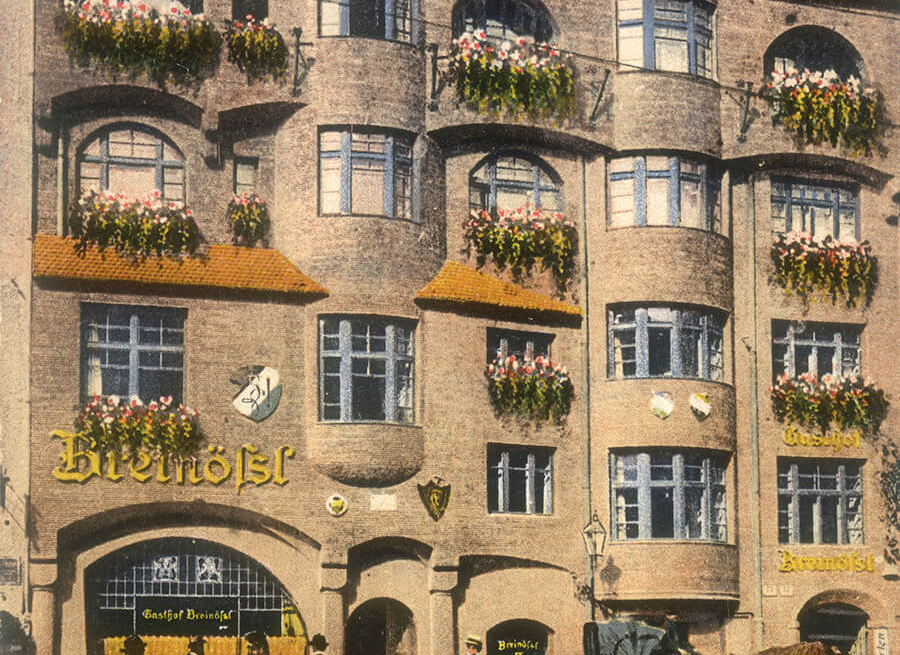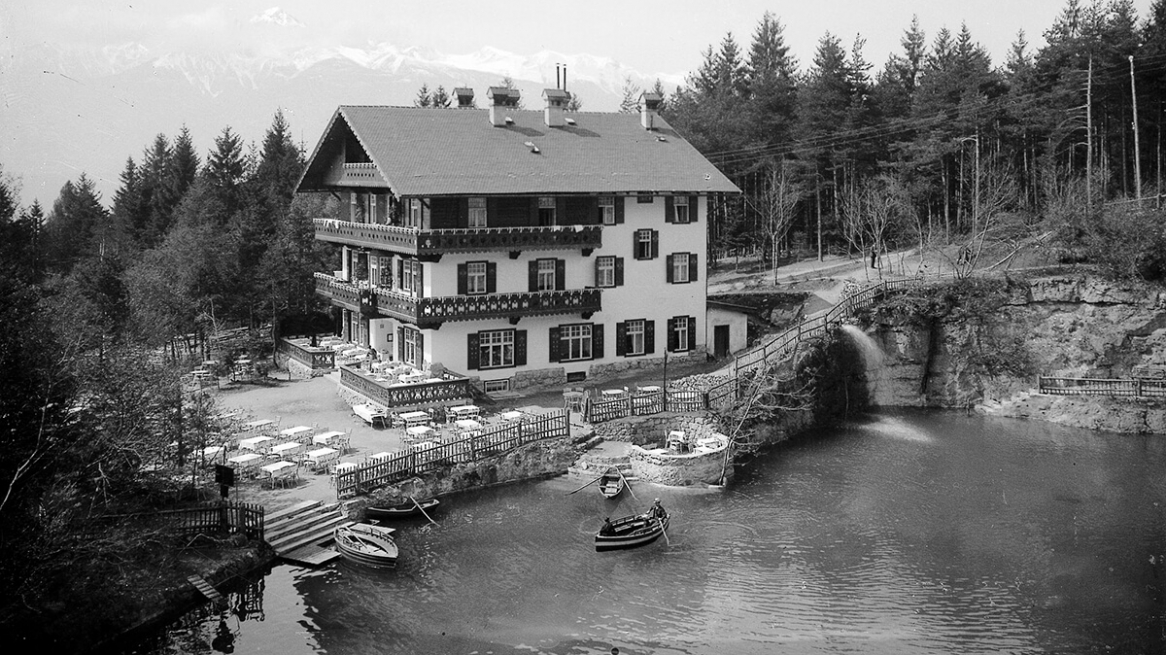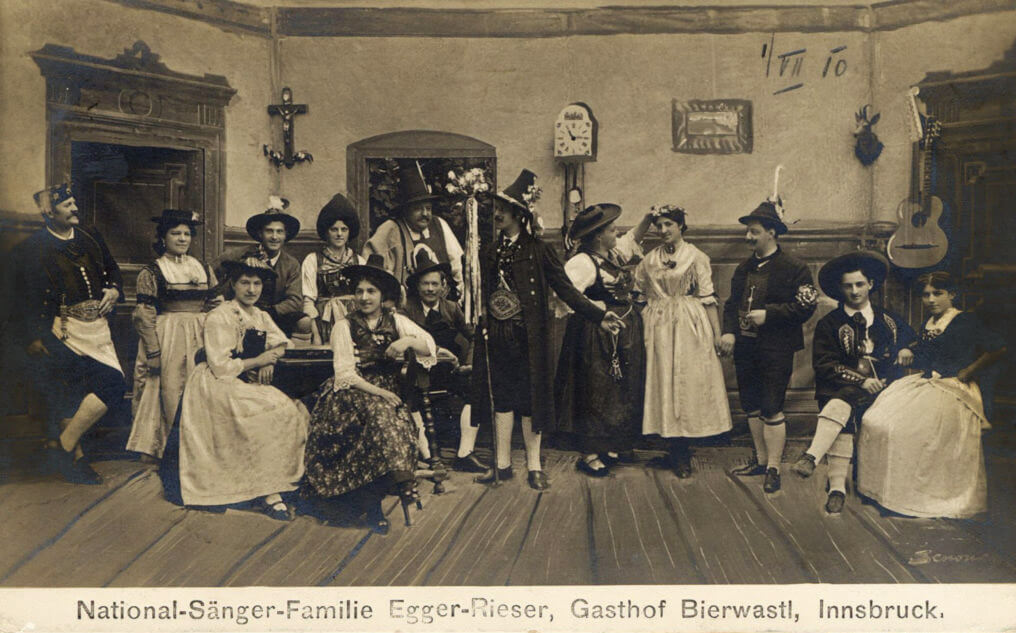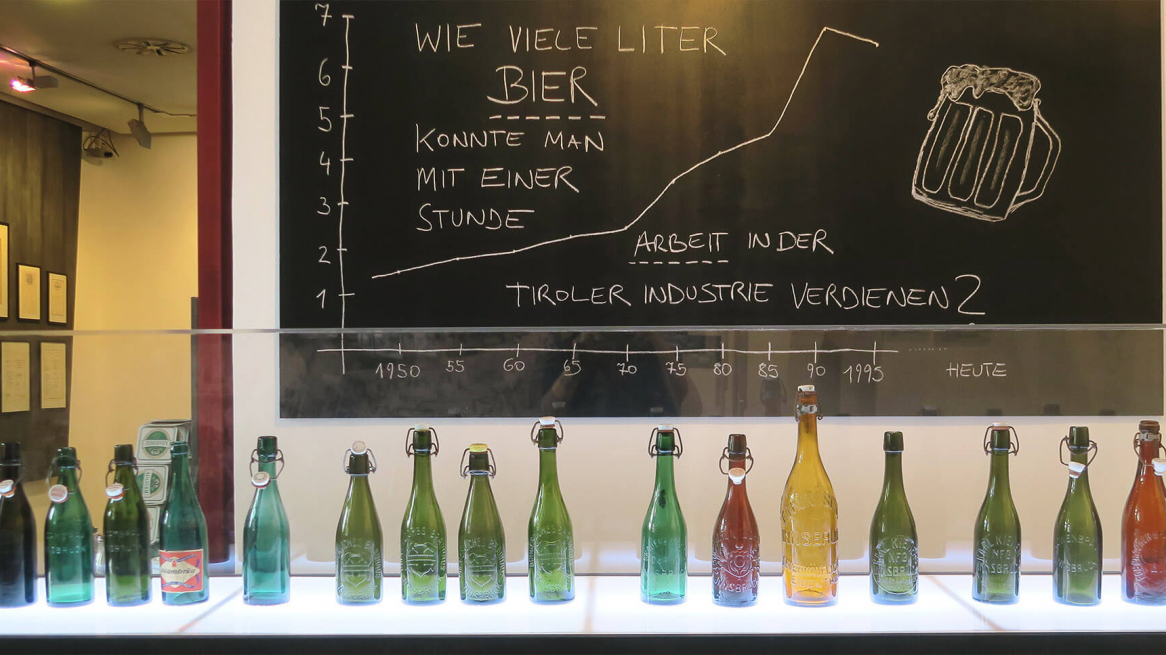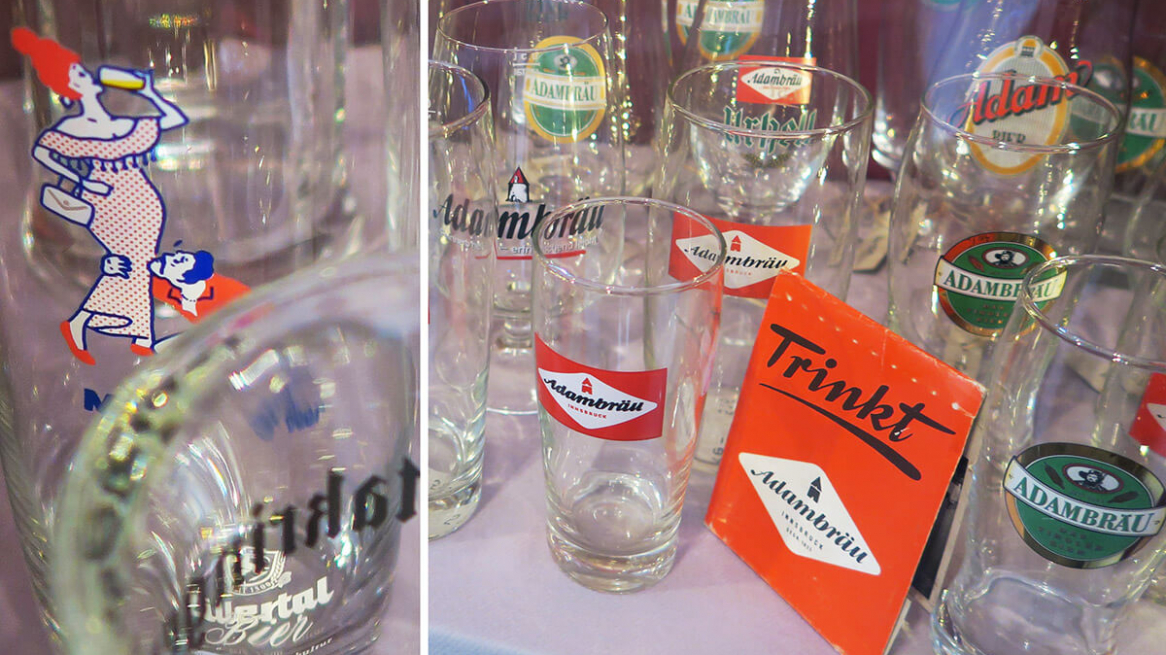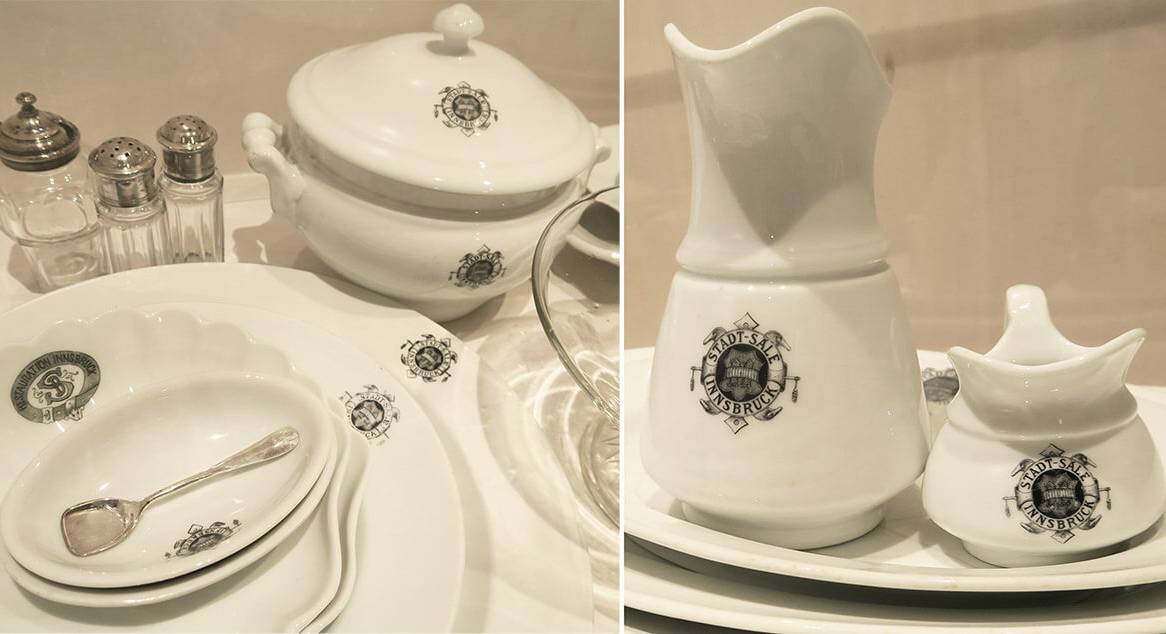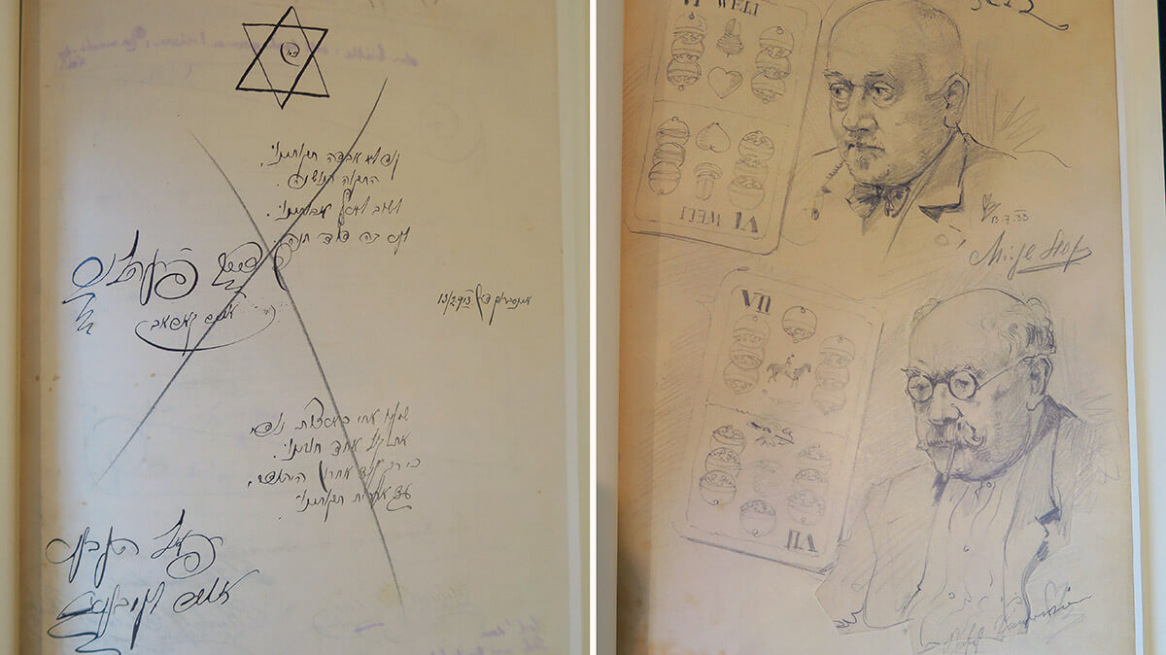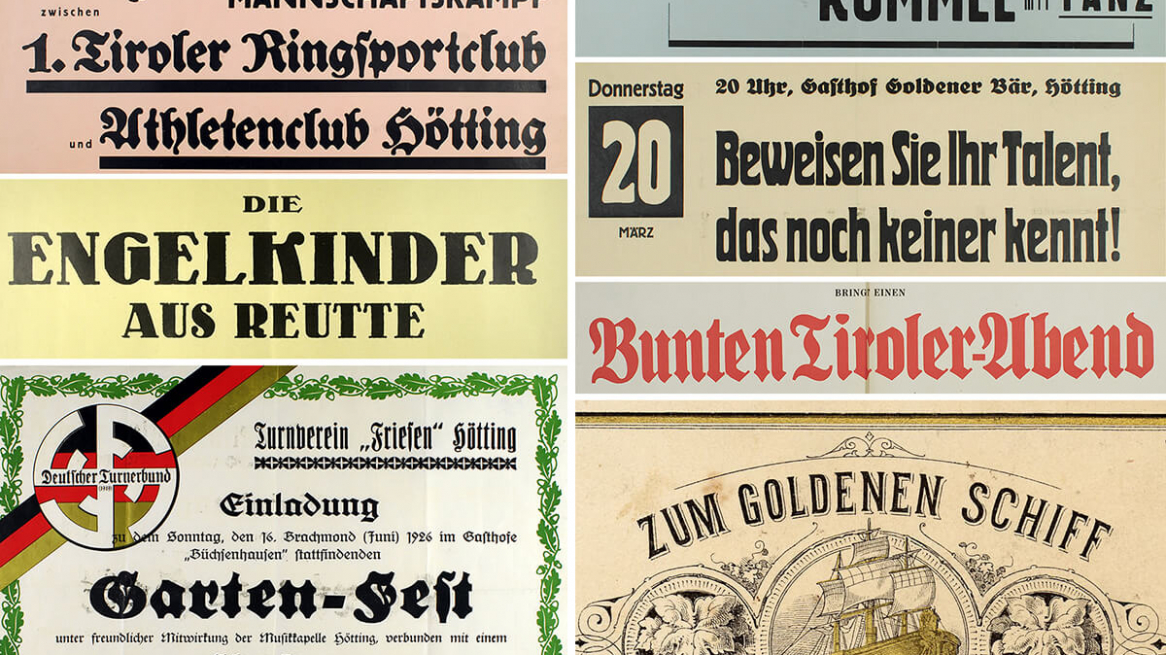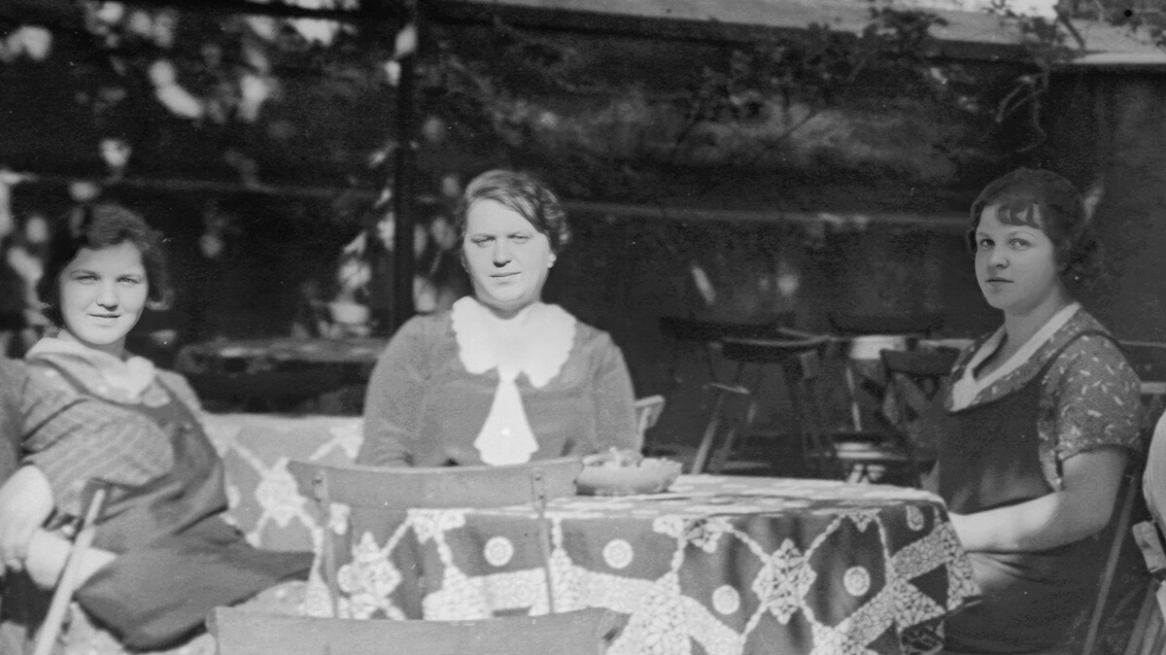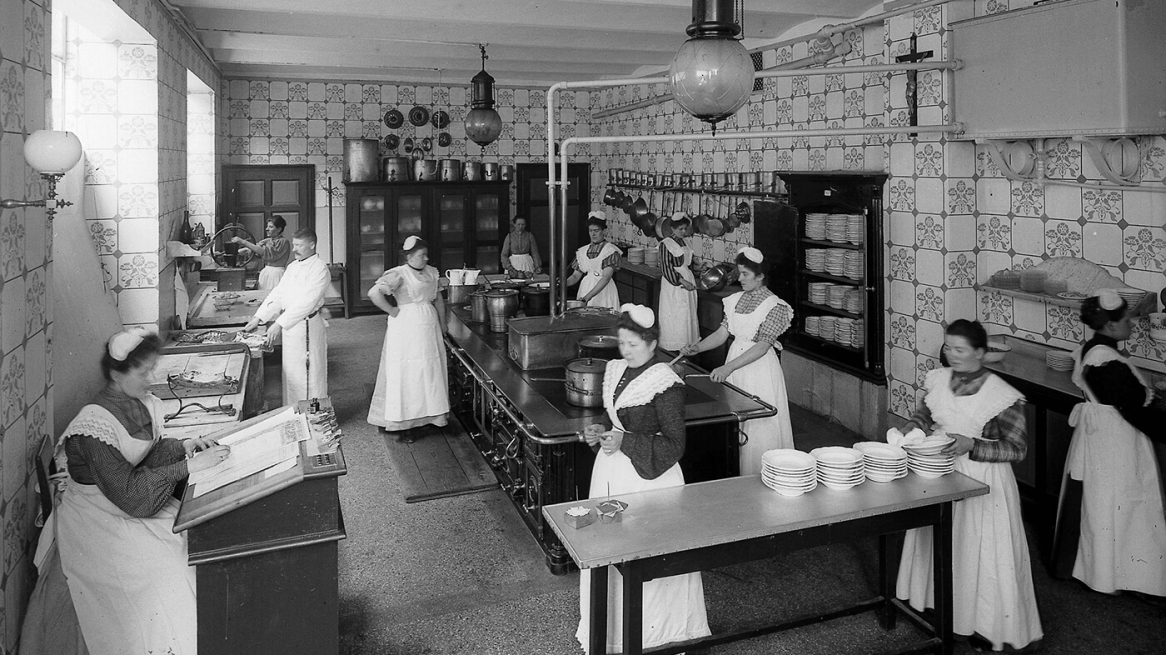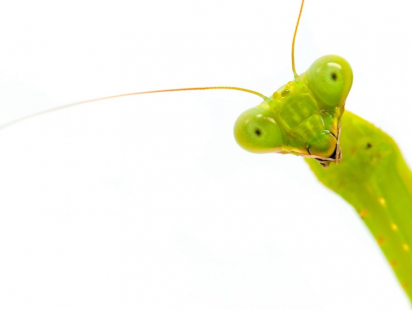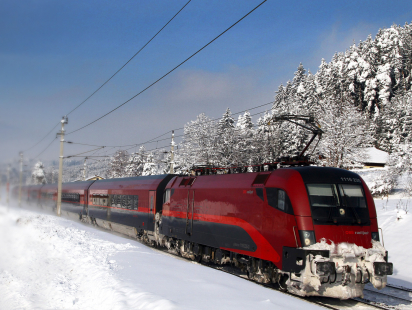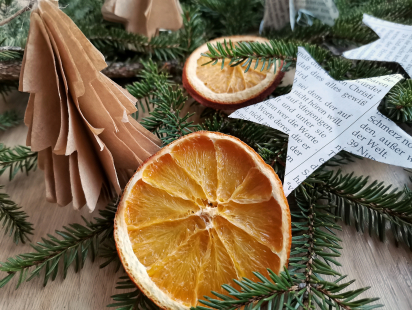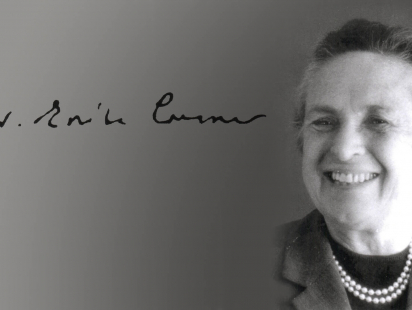The City Archive/City Museum of Innsbruck has more than 100,000 digitized photographs in its collection. In March 2020, the Archive/Museum launched a blog called “Innsbruck erinnert sich (Innsbruck remembers)” where articles with historical images are published frequently. The blog also prompts participation and contribution from its visitors and therefore, more and more interesting facts are being shared and preserved via this platform.
In times of pandemic, I find us lucky to have online resources like this to enrich our minds and expand our imagination. Curator Niko Hofinger at the City Archive pointed out that their articles about historical inns/pubs have been particularly popular, probably because our carefree visits to the pub were sorely missed. Since physical exhibitions resumed this year, the curators decided to hold an exhibition on this topic and add another dimension to it through spacial design.
SCENES OF BYGONE DAYS
There were two areas in the exhibition: the first one focused on the guests‘ experiences at the inns, both indoors and outdoors. The second one covered the backstage of the business, advertising and the presence of the inns and the customers in the city.
At the entrance of the exhibition, a painting of a wardrobe and a hat were hung on the wall to remind us that we were now entering a separate establishment.
Incorporating wooden elements, the first room resembles a “Stube” with a twist. A “Stube” literally means a “room”, but most likely indicates a heated living room or a sociable parlour where people dine, drink and have a good time. These Stuben are still common in Tyrol. As for the twist, since the exhibition only featured the inns which ceased to operate, its designer Christian Höller shifted the wall panels and furniture at an angle to create some distance from the Stuben we are used to.
MEET, GREET AND DRINK
There was a table with fitted benches based on the style of traditional Tirolean dining rooms. The objects displayed in this corner are the clues for you to imagine the sound of card-playing, conversations, cutlery and instruments, as well as the smell of alcohol, food, tobacco and the mingling people.
Traditionally, benches are right-angled, aligned with the walls and tucked in the corner. © Ichia Wu, photo taken in the Stadtarchiv/Stadtmuseum Innsbruck
The adjacent room, on the other hand, gave the impression of a leafy guest garden where house sparrows frequented.
If only these gardens had been preserved!
The backdrop is the garden of Gasthaus Meinl. © Ichia Wu, photo taken in the Stadtarchiv/Stadtmuseum Innsbruck
Although many historical inns really left no trace in the city of Innsbruck, the glorious building of the Breinössl still stands in Maria-Theresien-Straße.
In addition to the downtown inns, there were also suburban inns which catered the day-trip patrons. Some of them are still in business (but the one in the picture below is not)!
Hotel Seehof in Hungerburg (the lake, originally a quarry, is long gone) © Stadtarchiv/Stadtmuseum Innsbruck
ENTERTAINMENT
These old-fashioned Gasthäuser (guest houses) were more than the pubs we know today as they had proper stages set up for performances. These shows ranged from puppet theatre, wrestling, symphonic orchestra concerts to folk songs and dances. Some old photos of the performers and their backdrops reminded me of the Tiroler Abend show I saw last year in Innsbruck — actually, the father of the founder also performed at the Breinössl in Maria-Theresien-Straße in the late 19th century.
A SLICE OF THE SOCIETY
Private space for socializing or entertainment was scarce in the old days and the inns played the role of shared living rooms, accommodating people from all walks of life. Various clubs and associations relied heavily on the inns to host their activities which ranged from drinking games to political campaigns. Unsurprisingly, frictions did occur among different groups and in hindsight, some conflicts were sparks before the wildfires — or the tip of an iceberg.
THE JUNCTURE OF NATIONAL IDENTITIES AND IDEOLOGIES
Innsbruck sits tightly between Germany and Italy and this overlapping of cultures was reflected in some of those pub clashes. For example, a brawl broke out in 1904 while a group of Italian-speaking Tirolean students celebrated at the Weißes Kreuz inn near the Golden Roof. (Part of modern Italy belonged to the Austro-Hungarian Empire till 1918.) The students were celebrating the further inclusion of Italian aspects in the university but those who advocated Austria’s German lineage didn’t like the whole thing. Heated exchanges eventually led to one fatality in the fight and this scuffle attracted much media attention internationally. The resentment later also extended towards the Italian shops in Innsbruck.
According to a 1910 census made in Tyrol (including South Tyrol, now Italian), 57.3% of the people declared German as their main language, while 42.1% mainly spoke Italian. The dynamic was very different back then.
Höttinger Saalschlacht – The Brawl of Hötting in 1932 © Ichia Wu, photo taken in the Stadtarchiv/Stadtmuseum Innsbruck
In another incident, drawing attention was the main purpose of the provokers. In 1932 — the year before Hitler became Chancellor of Germany — the increasingly radical national socialists barged into the Social Democratic stronghold looking for trouble, hoping to raise their status and catch up with their German peers. Several hundred men fought in the Goldener Bär inn in Hötting and one Nazi member died. Even an aggressive dog was said to have been killed by a police rapier (on display in this exhibition).
OBJECTS IN THE BUSINESS
Also on display were the beer bottles and glasses owned by the local breweries and inns. The silverware and the ceramic dining sets bore the coat of arms of Innsbruck as they were from the premises run by the city.
Guest books were like continuous collaborations among the guests. There were intriguing drawings in the Fechtl inn’s guestbook while the guest book from the Hungerburgseehof was vandalized years later with anti-Semitic remarks page by page.
I was particularly interested in the wide range of fonts used in the posters, postcards, menus and the government documents. The menus displayed in the cabinet were collected by the City Archive when Austrian Schilling were to be replaced by Euro and together they formed a snapshot of the culinary scenery at that time.
A genre of the postcards actually praised the wonder of intoxication.
Is this also how you remembered the Maria-Theresien-Straße?
After seeing the exhibition, I actually wanted to know more — mainly about the female customers, innkeepers and staff in the early 20th century. I think women’s life in this era warrants an exhibition of its own!
Exhibition:
Pub-lic history: Sober facts from former pubs in Innsbruck
from 15 July 2021 to 25 February 2022, Monday to Friday 09.00~17.00
at the City Archive / City Museum of Innsbruck
Rate this article
Show me the location on the map
Ichia Wu is a Taiwanese artist with broad experience in the tourism sector. Since relocating to Innsbruck, she has become an ardent enthusiast of the traditional carnival celebrations ("Fasnacht") in Tyrol.
Similar articles
The zoo is at the cradle of my love for Tyrol. It awakened in me the longing…
I commute a lot between Innsbruck and Vienna and I know the advantages of both cities. Many…
The darker and colder it gets outside, the cozier and cozier it gets inside. When, if not…
The physical chemist Erika Cremer (1900-1996) is one of the most important research personalities of the University…

